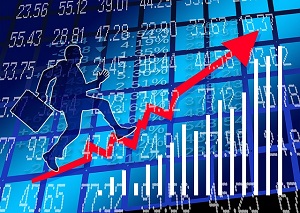 High-dividend-yield ETFs can be great additions to a portfolio: here are tips that will help you find the best ones
High-dividend-yield ETFs can be great additions to a portfolio: here are tips that will help you find the best ones
Here’s a look at high dividend yield ETFs and our advice on finding the best ones for your diversified portfolio.
4 ways to invest in profitable high-dividend-yield ETFs
- Look for ETFs that hold companies with long-term success and a long history of paying dividends. These companies are the most likely to keep paying and increasing their dividends.
- The current financial health of each company in the ETF. If a company is doing well, has done so consistently, and shows signs of growth, these factors are indicative of stocks that will keep paying a dividend.
- How does the company manage its relationships with investors? If there is a favourable relationship, and the company fits the other qualifications listed above, it may be a good dividend-paying stock to invest in.
- Note the competition. Look for ETFs with companies with a strong hold on a growing market and a unique product or service that cuts its competition.
High-dividend-yield stocks are a key part of a successful portfolio but at the same time they can give investors a false sense of security. That’s because some investors tend to think that all high-dividend-yield stocks are safe.
When a high dividend yield means danger
A high dividend yield may be a danger sign. It may mean investors are selling and pushing the price down. A falling share price makes a stock’s yield goes up (because you still use the latest dividend payment as the numerator to calculate yield — but the denominator, the price, has dropped). But when a stock does cut or halt its dividend, its yield collapses.
The best ETF investments practice “passive” fund management
The best high-dividend-yield ETFs practice “passive” fund management, in contrast to the “active” management that conventional mutual funds or some new ETFs provide at much higher costs. Traditional ETFs stick with this passive management: they follow the lead of the sponsor of the index (for example, Standard & Poors). Sponsors of stock indexes do from time to time change the stocks that make up the index, but generally only when the market weighting of stocks change. They don’t attempt to pick and choose which stocks they think have the best prospects.
This traditional, passive style also keeps turnover very low, and that in turn keeps trading costs for your ETF investments down.
We think you should stick with “traditional” ETFs.
The best ETFs provide the best of both worlds
Investors get the broad market exposure of a traditional mutual fund, plus the ability to trade at will with nominal fees. The best ETFs represent a low-cost, tax-efficient way for investors to make money in the long term.
Investors can buy ETFs via stock exchanges on margin or sell them short. The best ETFs offer well diversified, tax-efficient portfolios with exceptionally low management fees. Investors large and small use ETFs to build well-diversified portfolios.
ETFs have evolved, and competition has increased. Still, you need to be very selective with your ETF holdings.
6 things you should consider while looking for the best high-dividend-yield ETFs:
- ETFs can be volatile, even with the diversification they offer.
- Know how broad the holdings in the ETF are, so you can determine its volatility. The broader the ETF, the less volatility it may have. A sector-based ETF, like one that tracks resource stocks, may be more volatile.
- Know the economic stability of countries when investing in international ETFs. It’s also worth mentioning that foreign leaders may not be your ally when it comes to passing legislation that can affect your investments
- Know the liquidity of ETFs you invest in.
- Determine if the ETFs you buy will include taxable capital gains distributions.
- Consider buying ETFs in a lump sum rather than periodic small amounts to cut down on brokerage fees.
Dividends can be a big part of long-term investment gains
If you stick with top -uality high-dividend-yield stocks — or ETFs that hold those stocks — the income you earn can supply a significant percentage of your total return: as much as a third of your gains. And at the same time, dividends are more dependable than capital gains as a source of investment income.
Note, though, that when it comes to investment safety, a long history of steady dividends is more important than a current high dividend yield.
Good dividend stocks are a valuable component of any sound investment portfolio.
Do you already hold high-dividend-yield ETFs? Are there additional qualities you’d recommend looking for while selecting these stocks? Share your thoughts with us in the comments.
 Pat McKeough has been one of Canada’s most respected investment advisors for over three decades. He is the founder and senior editor of TSI Network and the founder of Successful Investor Wealth Management. He is also the author of several acclaimed investment books. This article was published on Jan. 10, 2017 and has been republished on the Hub with permission.
Pat McKeough has been one of Canada’s most respected investment advisors for over three decades. He is the founder and senior editor of TSI Network and the founder of Successful Investor Wealth Management. He is also the author of several acclaimed investment books. This article was published on Jan. 10, 2017 and has been republished on the Hub with permission.

